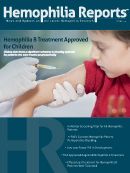Publication
Article
Hemophilia Reports
Low-cost Factor VIII in Development
Author(s):
Companies will use cell line development studies to determine where factor VIII manufacturing costs can be lowered without sacrificing efficacy.

Biotechnology company Expression Therapeutics and biomedical contract research group ABL announced they will examine potential improvements in manufacturing recombinant factor VIII replacement therapy, which will determine ways to reduce costs, the companies announced in a press release in August.
ABL will perform cell line development studies, through which the companies hope to reduce the cost of manufacturing an rFVIII therapy to increase its global supply. The companies acknowledge that the therapy is cost prohibitive for about 70 percent of the worldwide hemophilic population.
“We are very excited about our collaboration with ABL,” Christopher Doering, PhD, co-founder and partner of Expression, said in a press release. “It will allow us to move our lead products into clinical trials faster and deliver our high expression recombinant factor VIII to patients.”
Express Therapeutics has previously used bioengineered FVIII transgene technology in preclinical gene therapy animal studies. The researchers found significantly higher FVIII production rates in those studies, and plan to incorporate the same technology in their new developments. This protein infusion could be especially important for hemophilic populations in developing countries, as it has the greatest potential to be manufactured at a lower cost while still remaining effective.
“This is a great opportunity for ABL to apply our expertise in cell line development to help advance Expression Therapeutics’ factor VIII product towards clinical production,” Thomas VanCott, PhD, President and CEO of ABL, continued in the statement. “Adapting a cell line from adherent-based to suspension-based growth allows for production to occur in bioreactors, which substantially reduces material and scalability costs as quantity demands increase moving from the research bench to the clinic and eventual commercialization.”






